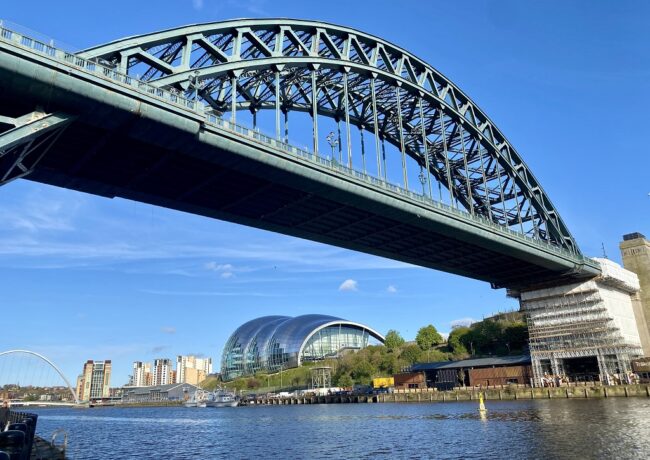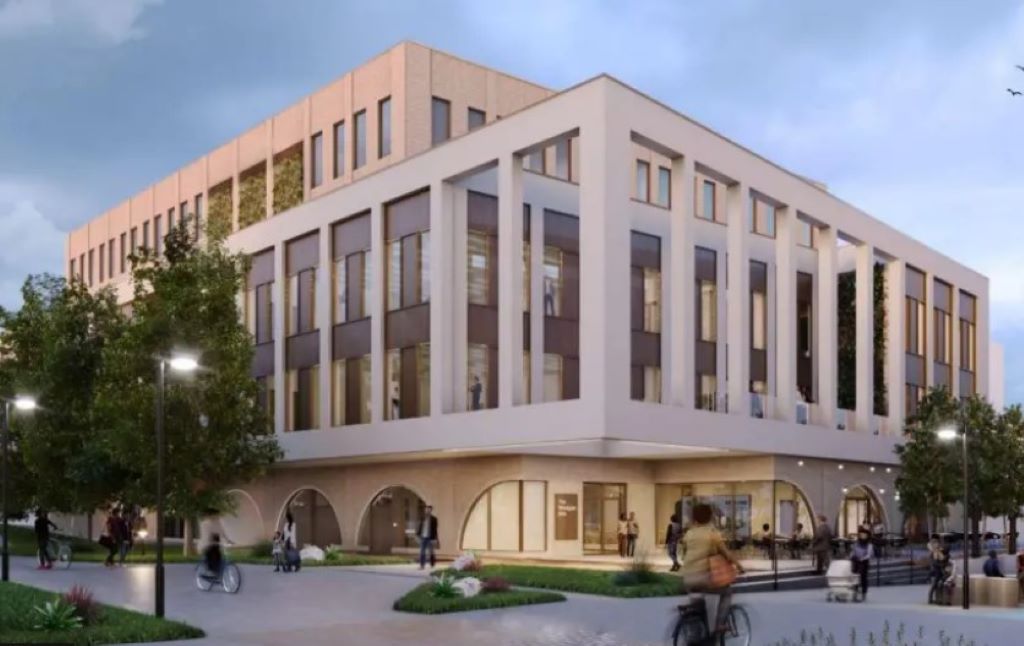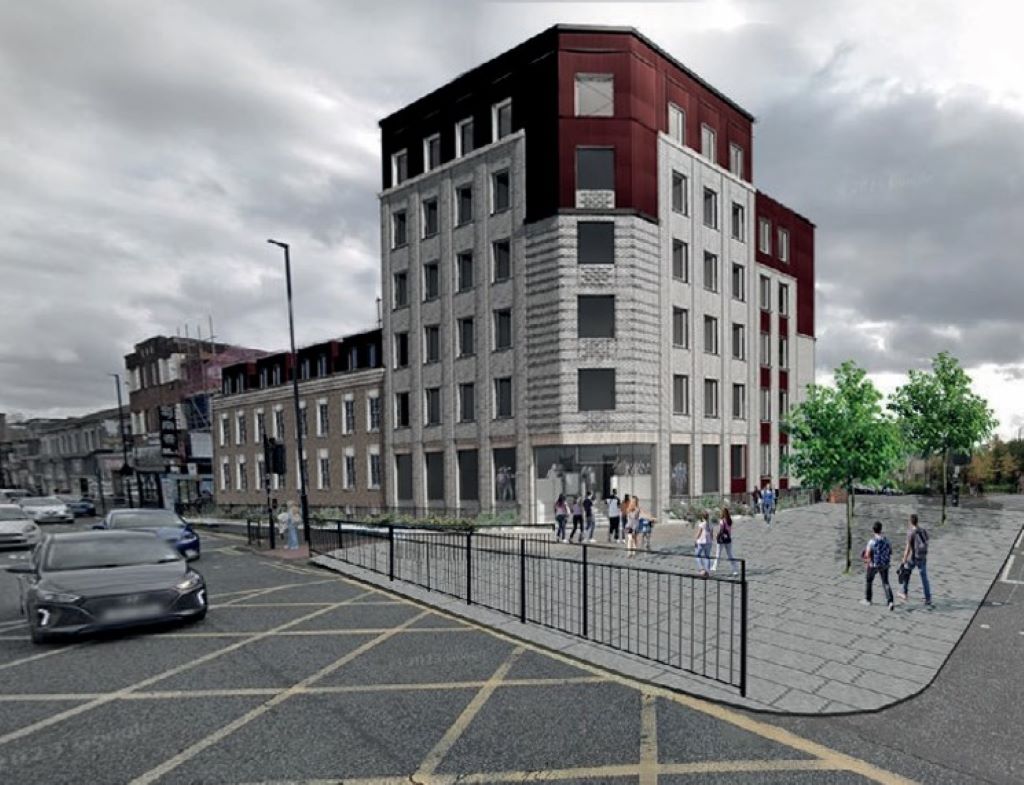‘The North East’s time has come’ | Q&A with Anneliese Hutchinson & Gordon Hewling
Place North East met up with Hutchinson of Gateshead Council and Hewling, managing director of Avison Young in Newcastle, to discuss public-private partnerships, current and future projects, rising rents, and regeneration.


With the combined authority and devolution, have you seen a big impact on how that allows public and private sector to work together and get projects up and running?
GH: I think the North East’s time has come. We’ve got the combined authority in place. We’ve got a lot of land, lots of opportunities, and I think the North East is stepping into its own now.
If I speak for Avison Young, Newcastle is probably our biggest investment in our budget to support primarily the public sector. A lot of the work we do, not just in Newcastle but across the UK, is about our public-private partnership and supporting colleagues in the public sector. That’s our sweet spot, working across the public and the private sector and trying to enable development and regeneration.
AH: We’re seeing it, but it’s in the early stage. As [Karen Gilmour said recently], we’re not afraid to learn from other regions and other combined authorities.
It’s underlined: you know what? We really can work together and make things happen. The combined authority is still trying to understand how we work together, what the processes are, the governance, etc. In a year’s time we’ll be flying, in two years we could have overtaken Manchester, in three years’ time – who knows?!
I think it’s the links with the government as well, and I suppose that’s partly due to the change in national governments. With the combined authority and the Mayor there are direct links through, which means that we understand what’s going on better, we can react quicker, and then also understand what we need to be doing to paint those big pictures.
There’s a lot of emphasis on long-term partnerships between the public and private sectors. How has this worked in the North East?
GH: Some of the investors that have moved north to Manchester are starting to talk to us and what they’re saying is, they’re interested in that longer term investment. Well that absolutely suits what we’re trying to do, because there are no quick wins in regeneration.
We were talking internally as a business about, ‘what’s the next big project we want to work on?’ Because that gives us continuity of income and profit as well. Most regeneration projects are 10 or 15 years: Pilgrim Street has taken more than 20 years, and we have regular income through that. Not just us, but lots of other people in the city as well. That helps to feed into the local economy, in the short term as well as in the long term when the projects are finished.
And are there any specific projects in Newcastle and Gateshead that you’re talking to investors about?
AH: In Gateshead in particular, one of the unique things we have is an awful lot of land and then also the infrastructure. We’ve made the investments, so we have the energy schemes in place to support that. We’ve got the land, we’ve got the plans, we’ve done a lot of the work in terms of looking at what the risks are, what the issues are, what it’s going to cost in terms of remediation of land. We can provide the certainty, the infrastructure, and a good knowledge of where we need the funding to make things happen.
We have the town centre area of Gateshead, and the flyover, which is this 1960s piece of infrastructure, is being demolished so that we can link our business areas with our residential areas. When we do that, we’ll end up with a town centre that’s really well connected.
We have ambition for more than 4,000 new homes tied in with a new office business district in the quays. If you go backwards from the river, we’re hoping to have a conference centre and arena on a riverside site. Moving back from that, our real strength is the digital innovation and we think that that will attract more offices and more inward investment, and then further back from that we have the residential, which will wrap round the town centre. We obviously have our creatives as well, so, the Glasshouse and the Baltic Centre.
That’s within 10-15 minutes walking distance of Newcastle – you can be in a new urban area that has everything you need, in a walkable city, and hopefully with zero carbon living.
Are there any time frames on that?
AH: We’ve started already, we have the energy infrastructure there already and plans to extend that even further. We’ve got new residential development on the westernmost edge of the area we’re talking about. That’s actually been the best-selling residential development from that particular developer. We’ve had to stop selling because they’ve had so much on the books in terms of the demand.
We’re now looking to work with Capital & Centric on the old Town Hall and also on an interchange as well, which will be over the next two or three years. The conference centre hopefully comes alongside that. But what we’re looking at and what we’re hoping to launch in the next few months is a regeneration programme of investment over the next 10 years.
How important is infrastructure when it comes to regeneration?
AH: Infrastructure is a fundamental part of building communities and you can’t have one without the other. That’s why we put our money where our mouth was in terms of trying to develop that energy scheme and the energy network [in Gateshead], which is quite unique in using heat from water and then that’s used to heat the offices and the leisure centres.
If we want that fundamental regeneration and the change, you’ve got to build that. As a local authority, you won’t necessarily get the private investment for the infrastructure, so we see our role as: we provide the infrastructure, that’s the basics and then that enables the private sector development.
GH: The investment in infrastructure goes back to building confidence as well. If we’re investing in the things that are probably more difficult to get private sector investments from, that builds the confidence, it reduces the risk, and then then you put yourself in a good place to attract external investment as well.
I think particularly in the North East, because sometimes the values change, you’ve got to work together. A good inquiry in Newcastle might be 10,000 or 20,000 sq ft. In Leeds it might be 30,000 or 40,000 sq ft. In London, it might be 100,000 sq ft. So when we develop things like Bank House, that’s 110,000 sq ft and is fully let now, but we’ve let it out at chunks of 5,000, 10,000, and 20,000 sq ft, so it’s harder work. But as we’ve seen with Pilgrim Street, you speak to our client there, and there’s a lot of value: gradually rents have gone up and the values have gone up, and they think there’s more head room as well. It goes back to having a long-term view.
We had a joint venture in place for 15 years to try and deliver residential development on some of our more difficult sites. It was a bit of a mixture between some more difficult sites and some of the better sites, helping them by putting them in a joint venture together, and that way, we ended up developing them all. It was also about raising the standards as well, as an exemplar to say: ‘actually, this scale in this standard of development works in the North East, with bigger houses and more environmental [credentials]’. And that’s been quite successful.
And are there any other key ingredients needed for regeneration, as well as long-term partnerships and infrastructure?
GH: Deliverability. I mean, everybody says they can but in the North East we are doing it and it is having an impact on communities.
If you look at rents, when we started Bank House, that has gone up by over 50% now, over the period of probably five or six years. That shows the appetite. There’s not a lot of space available in the city or about to be delivered in the city, so you can’t just snap your fingers and have 100,000 sq ft of office appear, so something we’ve seen is rents improve and we think there’s more headroom for them to improve further as well.
AH: I would say, what’s good for Newcastle is good for Gateshead, and vice versa. The river is not in the way; it’s an opportunity, not a barrier. We’ve got a joint local plan already, but we’ve just agreed that we’re going to do another one because it’s worked so well. We have the same markets, and so we can look at employment land together. We can look at housing growth and everything, to make sure that we’re using the land we do have available in the most complementary way.






It’s titled “The North East’s Time Has Come” yet there’s not one mention of Sunderland and the over £1bn of investments and developments that are happening there. Only when we see the people of the regions two biggest cities in the region actually start working together and the elimination of Tyne Bias which plagues this region will ever actually start developing collectively.
By Garth